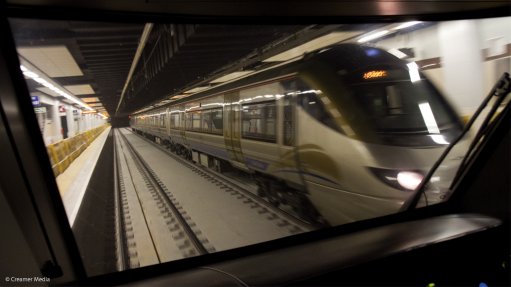
Photo by: Duane Daws
The percentage of South African households that have access to a car increased from 22.9% in 2003, to 28.5% in 2013, Statistics South Africa’s (Stats SA’s) latest National Household Travel Survey (NHTS) has revealed.
The NHTS for 2013 also showed that while taxis, as the most dominant mode of public transport, were used by 26.5% of workers, those who used private transport were still in the majority at 30.8%.
Speaking at the launch of the NHTS, Transport Minister Dipuo Peters noted that these figures were despite government’s call for people to make greater use of public transport and the introduction of new public transport initiatives, such as the Gautrain and various bus rapid-transit systems.
“The statistics released give us some insight on [these issues] and we need to work on that and determine what it is that could actually change the behaviour of South Africans,” she stated.
The Minister also called on the media to advocate the use of the Gautrain buses, in particular, stating that these were becoming “wasteful expenditure” of money that “could be deployed elsewhere”.
She noted that people preferred using their personal cars to get to Gautrain stations, which caused traffic congestion, stating that this had never been the plan. When the system was developed the bus system was designed in a way to feed into the train stations from various areas, thus decreasing private car travel, she said.
Meanwhile, the Stats SA report also revealed that the percentage of people walking more than 15 minutes to access public transport increased from 10.9% in 2003, to 14.4% in 2013, which meant that transport facilities were further away from where people resided than ten years ago.
“This warrants the improvement of transport infrastructure, operations and land use planning, which will result in improved access to transport,” Peters stated, pointing out that the walking time for taxis specifically was beyond 15 minutes for 18% of urban households and beyond 30% for rural households.
“The question we need to ask ourselves as planners and policy developers is, are the long hours of travel productive and how does this impact on the growth of our economy,” she said.
Meanwhile, Peters noted that household spending on public transport was high despite government’s efforts to reduce the burden by providing subsidised bus and passenger rail services, which cost the fiscus more than R5-billion a year.
According to the NHTS, transport spending currently exceeded 10% of households’ disposable income, which was above the national objective.
Further, Stats SA revealed that taxis were the most dominant mode of public transport in 2013.
In 2013, 69% of households that used public transport used taxis, up from 59% in 2003, while 20% of households used buses and 5.8% trains.
The Minister emphasised the importance of the taxi industry, stating that it directly employed about 300 000 people and contributed R40-billion a year to the South African economy.
She added that issues facing this industry would be discussed at an upcoming Taxi Summit.
Meanwhile, according to Stats SA, in 2013, 32.6% of households listed travel time as the most important factor influencing their choice of mode of transport, while 26.1% cited travel cost and 9.2% flexibility.
In 2003, 48.4% of households cited safety as the most important factor in choosing a mode of transport, followed by travel time at 15.3% and travel cost at 14.9%.